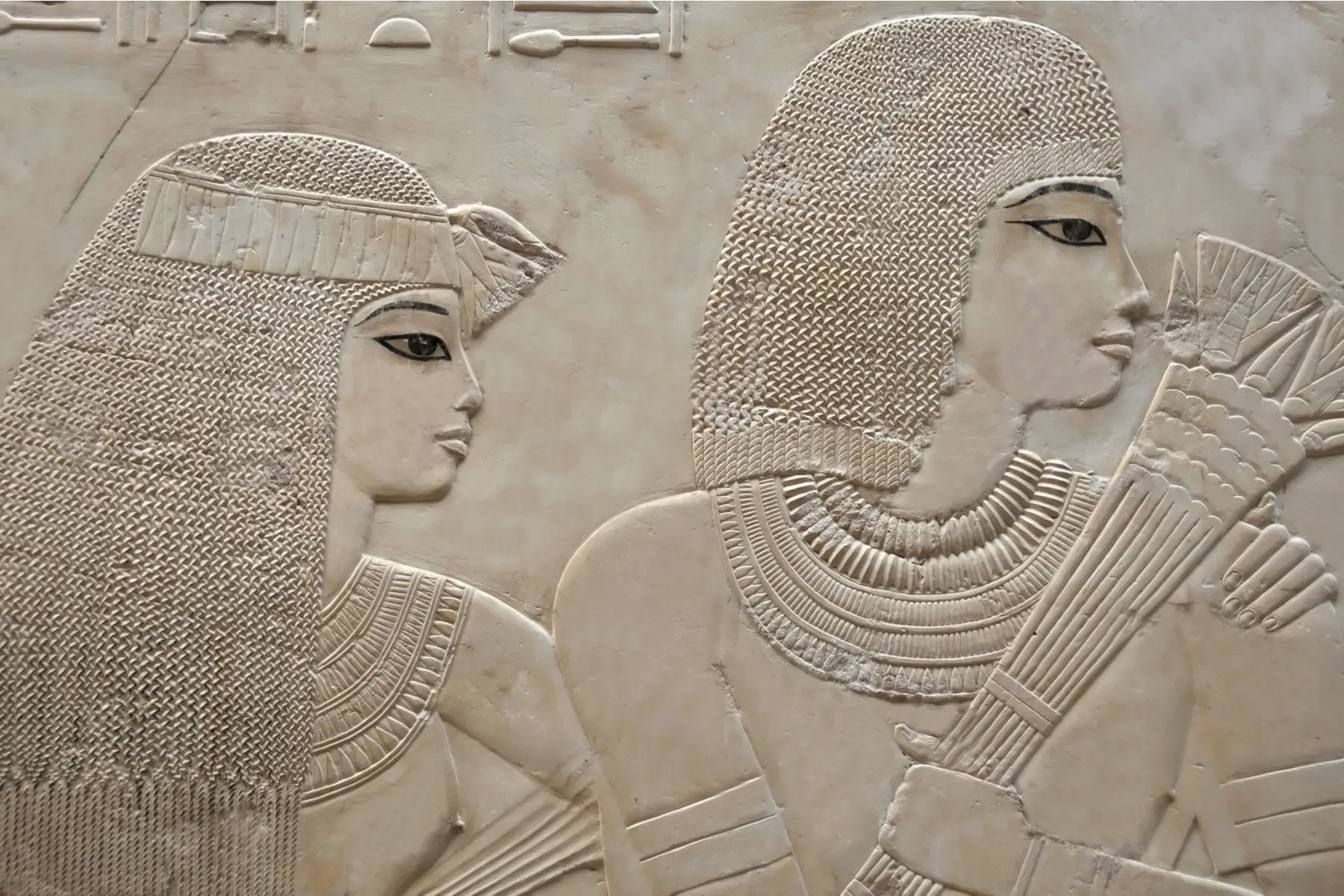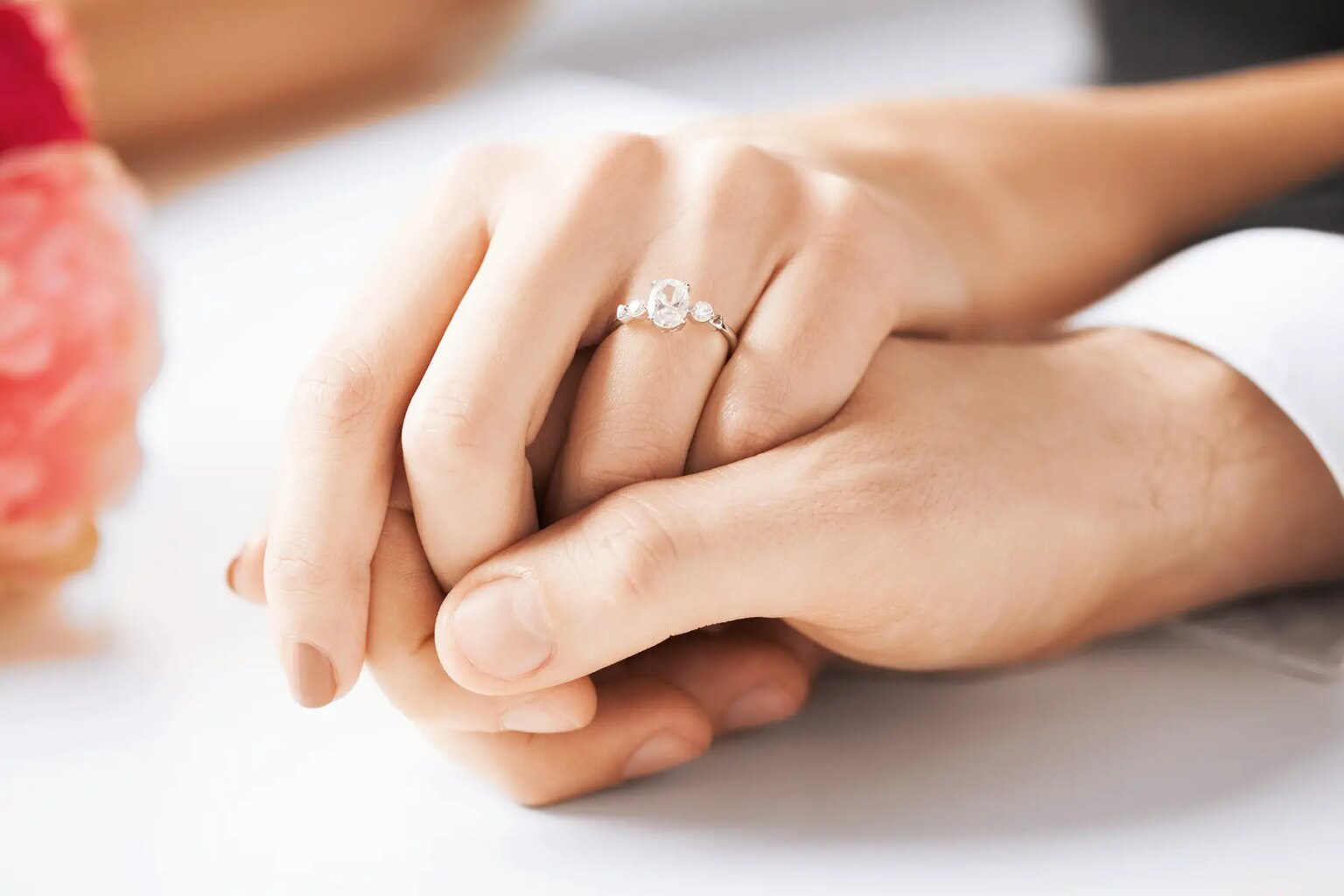Marriage is something that exists within almost every culture in the world. However, the way that people wear wedding rings varies significantly depending on where you are. Although it is seen as a universal symbol of love and unity, it also comes in all manner of shapes, sizes, and materials.
But before we explore the various wedding ring traditions across the globe, let’s first take a look at where this meaningful piece of jewelry came from.
The origins of the wedding ring
Many would argue that Egypt is the birthplace of the modern wedding ring. However, the tradition actually originated in Neanderthal times. Believe it or not, these so-called barbaric creatures were arguably more civilized than you might think.
In fact, Neanderthals used to tie things like twigs, grass, and rushes around the bride’s wrists or ankles. Some have suggested this expressed friendship and loyalty. It’s also been speculated that this would keep the woman’s soul intact and help her live a long life. It wasn’t until much later on that other cultures began to create their own wedding ring traditions.
The ancient Egyptians
Several hundred years later, the ancient Egyptians began making their own variations from materials such as bone, ivory, leather, and hemp. The wedding ring later evolved into a metal form known as ‘ring money’.
Interestingly, ancient law dictated that once a woman received such a ring, she would have a claim on her husband’s possessions.

The Romans
The Romans had a more romantic interpretation of the wedding ring (though this is perhaps unsurprising, given their rather lavish lifestyle). To them, the precious item of jewelry symbolized that a married woman had unlocked her husband’s heart. This romantic notion explains why a key was often part of the traditional wedding ring during those times.
Early Asian civilizations
The early Asian civilizations were not as romantic as the Romans when it came to their wedding ring traditions. On the contrary, they saw it as more of a legal contract between a man and a woman.
Remarkably, couples sealed their marriages with puzzle wedding rings that immediately fell apart if they tried to remove them from their fingers. The wedding ring was, therefore, also used as a way to expose infidelity. After all, if one of the partners removed it in the absence of the other, they would soon find out about it.
Over the centuries, the wedding ring gradually evolved into the style that we know today.
During medieval times, wedding rings were made almost exclusively of gold and often included gemstones. In the 1940s, jewelers began embedding diamonds into the rings, which remains the fashion today.
The history of the man’s wedding ring
How men came to wear wedding rings is truly a heartbreaking story.
Up until the 20th century, only women would traditionally wear them as a means to show other men they were taken. However, when World War II sent the men off to war, they began to wear wedding rings as a means of carrying their loved ones with them. This was particularly poignant given that they didn’t know if they would ever be reunited.

While this romantic notion no longer applies, of course, the tradition remains. The majority of men in the Global North continue to wear a wedding ring to this day.
That said, nowadays, men’s wedding rings come in a variety of different forms. They are not only made of gold and no longer have to match the design of the bride’s. Depending on the groom’s preference, for instance, they might be simple and sleek or have diamonds or other stones – it all comes down to personal taste.
The choice of gold content for a wedding ring
Interestingly, the amount of gold content in a wedding ring actually depends on where you are in the world.
People from countries where pure gold is the norm, for example, often consider 14 or 9-carat gold to be low-budget. Those who are used to lighter gold, however, find pure 22-carat gold to be too showy and fake. Once again, it all comes down to geography.
The Global North
Most people in the Global North regard 14-carat gold as the standard when choosing a wedding ring for their partner. That said, 9-carat gold is becoming increasingly popular, even in countries like Germany and the United States, where 10-carat gold is also common.
Across Asia
Pure yellow gold is far more plentiful and popular in Southeast Asia. It is also strongly linked to religion and can be seen in the many spectacular temples scattered throughout the continent. As a result, 18 and 22-carat gold is regarded as the norm.

Meanwhile, in India, gold is seen as a symbol of superiority, beauty, and attractiveness. This is why Indian brides are often sparkling with gold on their wedding days. The groom might also give his bride a wedding ring with a higher gold content, as this is more durable and symbolizes that he is investing in a long-lasting marriage.
Modern cultural wedding ring traditions
The wedding ring has taken on many different designs throughout the ages and is worn in various ways worldwide. Below are just some examples.
England and North America
In England and North America, wedding rings mark special milestones throughout a marriage. The first mark is the engagement ring, which is worn on the fourth finger of the right hand. Once the couple is married, the engagement ring moves to the opposite hand, on the same finger, but on top of the wedding band.
The romantic meaning behind this is that the ring sits closer to the heart of the one who wears it. And finally comes the eternity ring. This is traditionally given on the first wedding anniversary or when the first child is born. It can either sit on top of the wedding and engagement ring or on the opposite hand.
Russia and France
In France and Russia, wedding rings come in a wide variety of designs. In France, for instance, they are often a family heirloom passed down through the generations. Unlike in some European countries, engagement rings can also have gemstones such as rubies, emeralds, or sapphires instead of diamonds.
The Russians, meanwhile, are fairly creative when it comes to their wedding ring design. These rings often consist of three multi-colored, interlocking bands of rose, white, and yellow. These are known as ‘triple rolling rings’ and symbolize the Holy Trinity of the Christian Orthodox religion, or the couple’s past, present, and future.

The Celtic nations
In Celtic countries, wedding rings often have a Claddagh design incorporating hands, a heart, and a crown. These represent friendship, love, and loyalty, respectively. Although many people claim that this design dates back to the 17th century in the Irish fishing village of Claddagh in Galway, it most likely originated in Roman times.
Back then, the gesture of clasped hands was a symbol of pledging vows. Of course, nowadays, the Claddagh ring is an emblem of Irish identity and is worn by many people, not only those who decide to tie the knot.
The Indigenous people of North America
If you like a splash of color in your jewelry, then you will no doubt appreciate the style of wedding ring worn by the many indigenous people of North America. These are almost always made of silver and feature vibrant semi-precious stones and materials such as turquoise, red coral, and shells.
These are thought to hold specific powers in Native American culture and benefit the wearer. Furthermore, the rings are often engraved with symbols – such as the sun, trees, or fruits – as well as animals – like elk, moose, and buffalo – that are considered to be sacred to that particular culture.
Religious wedding ring traditions
Interestingly, the wedding ring is not always worn on the left hand. In fact, religion often plays an important role in deciding how it should be worn.
Catholicism
Some people regard the left as evil. In fact, the Latin word for left is ‘sinister,’ which naturally has dark connotations. This is why, in some Catholic countries, people wear their wedding rings on their right hand. That said, not all Catholics follow this rule. In the Netherlands, for instance, they wear their ring on their left hand, while in Austria, they choose their right hand.
Protestantism
Similarly, while Protestants often wear their ring on their right hand, not all of them do so. After all, some like the idea that it sits closer to their heart and, therefore, opt for the left ring finger. Ultimately, it really comes down to how much of a romantic soul you are.
As you can see, there is no ‘one size fits all’ approach (pun intended) when it comes to wedding ring traditions around the world. Indeed, when picking out that all-important piece of jewelry, personal taste plays just as much a role as culture and religion. And this is just as well, too, given that with any luck, you will be wearing it forever!




